Charger Efest BIO V2 2014
This is an updated review of the BIO V2 charger. When possible contents has been reused from the old review.
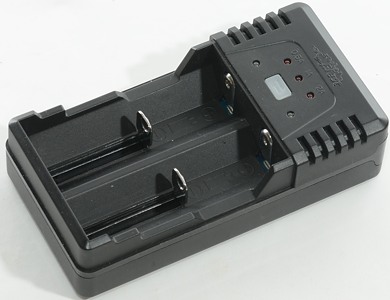
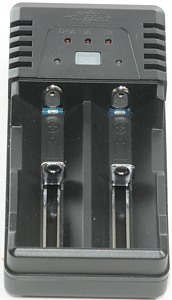
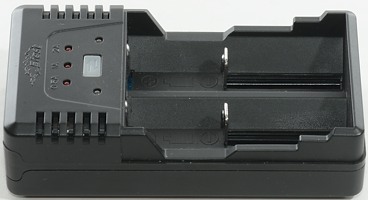
Efest has been building a line of chargers from single cell to four cell with fixed and variable current, this is a two channel charger wit 3 charge currents and usb output.
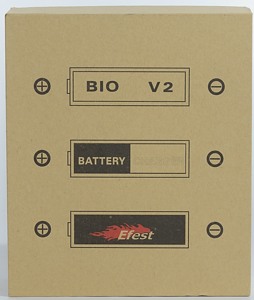
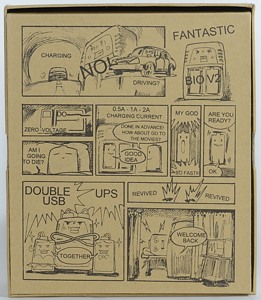
The charger arrive in cardboard box with a comic on the back.
Note: This comic can be misunderstod, it is possible and safe to review batteries with tripped protection (i.e. batteries that read about 0 volt on a DMM), but dangerous to review cells that are completely discharged (Below 2 volt, but excluding tripped protections).
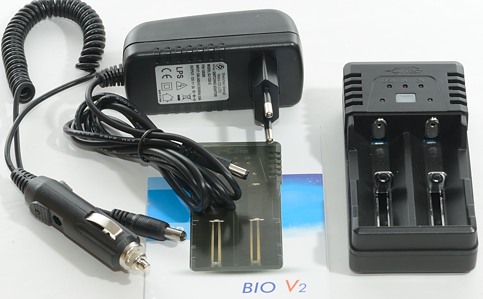
The box contained: Charger, mains power supply, car cable and manual.
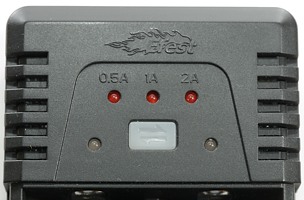
The charger has a very functional control panel with one button and 6 leds:
3 red leds for showing charger current (0.5A, 1A, 2A), the button is used to change between them.
2 red/green leds for showing if the batteries are charging (Red when charging, green otherwise).
1 blue led (behind the button) to show when usb out is activated, this is also done with a press on the button.
The red and red/green leds only works when the charger is powered, the usb output blue led only works when the charger is unpowered (i.e. using a battery).
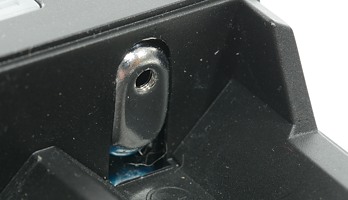
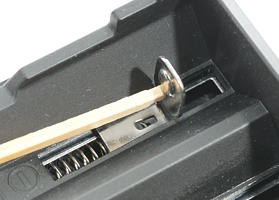
The battery + connection is slightly raised and worked with flat top batteries. The slider works fine.
The slider can work with batteries between 30.5 mm and 70 mm.
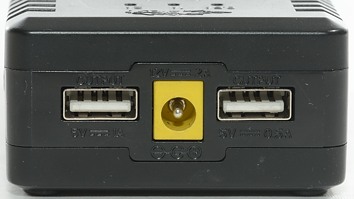
One the end the charger has DC input and two usb outputs.


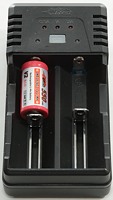

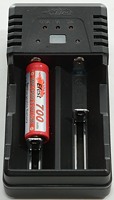

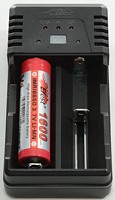
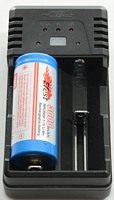
The charger can handle 70 mm long batteries including flat top cells.
The charge current is to high for 10440 batteries and I will not recommend charging them in the charger.
Measurements charger
- When not connected to power it will discharges with up to 1.5mA (1.0mA for non usb slot), when usb is on the usb slot will discharge with 12mA.
- When power is connected with a full battery, the charger will discharge with 0.25mA
- Below 2.8 volt the charger charges with up to 18mA
- Above 2.8 volt is will charge LiIon with full current.
- It will restart if battery drops to 4.15 volt.
- It will not restart charging on reinsertion of the battery or power cycling.
- The channels on the charger are independent, i.e. there are small differences between them.
%20%231.png)
First test is a Panasonic 18650 with 3100mAh capacity. The charger uses a CC/CV curve, charging to 4.2 volt and stopping at around 50mA, this is very good.
%20%231.png)
The 3400mAh cell works exactly the same way.
%20%231.png)
And also the 2600mAh battery.
%20%231.png)
With the old 16340 IMR cell the rather high restart voltage gives the charger problems with detecting when the cell is done.
I will not call it a charger problem, it is more an indication that the cell is way past its prime time.
%20%232.png)
The other channel charges just as fine.
%20%231.png)
The 0.5A charge works the same and the termination current is the same.
%20%231.png)
A new 14500 battery is charged perfectly
%20%231.png)
%20%231.png)
Because the termination current is the same on 0.5A and 1A, the cell has the same voltage drop and the charger does the same.
%20%231.png)
Doing a 2A charge does also look good.
.png)
The charger uses about 0.8A from 12 volt when charging two cells with 1A.
.png)
The temperature raise is fairly limited with 1A charge current.
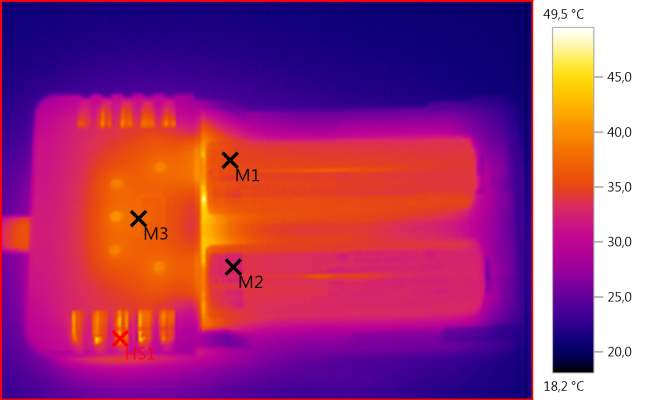
M1: 35,0°C, M2: 32,6°C, M3: 37,7°C, HS1: 49,5°C
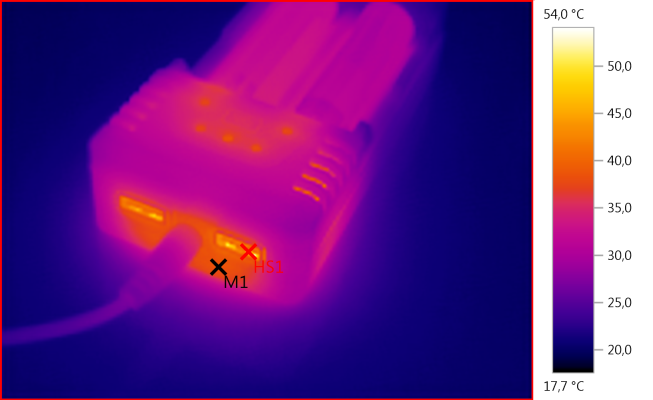
M1: 38,7°C, HS1: 54,0°C
.png)
With 2A charge current the charger gets hotter (No surprise).
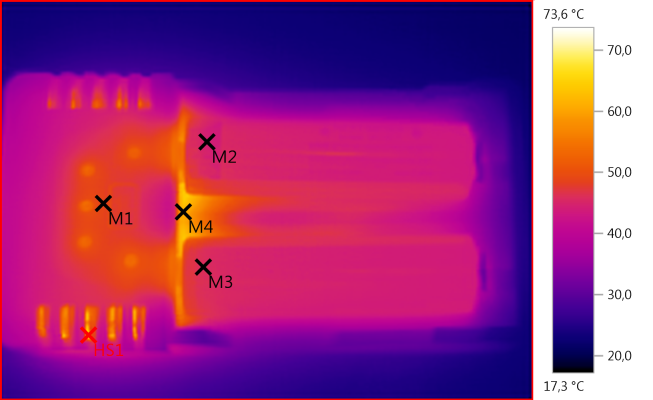
M1: 48,8°C, M2: 44,4°C, M3: 45,9°C, M4: 61,3°C, HS1: 73,6°C

M1: 54,9°C, M2: 47,2°C, HS1: 89,4°C
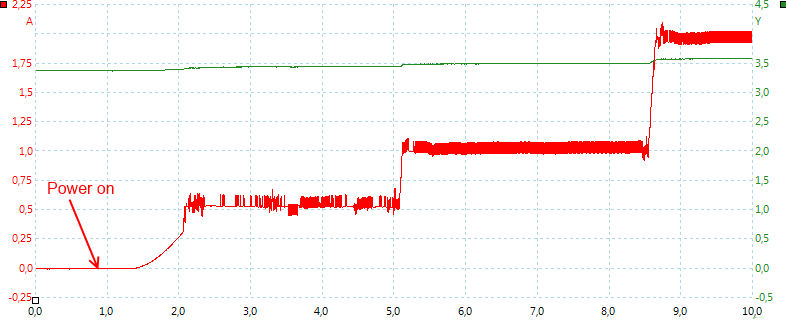
The charger has a fast startup and changes between the different currents fast.
Measurements USB output
- The charger can only use one battery for the usb output
- Blue led flashes when battery is low (Turns on at 3.36 volt)
- Both usb output is coded as Apple 2.1A
- Output turns off when overloaded.
- USB output turns off after 30 seconds with less than 17mA load.
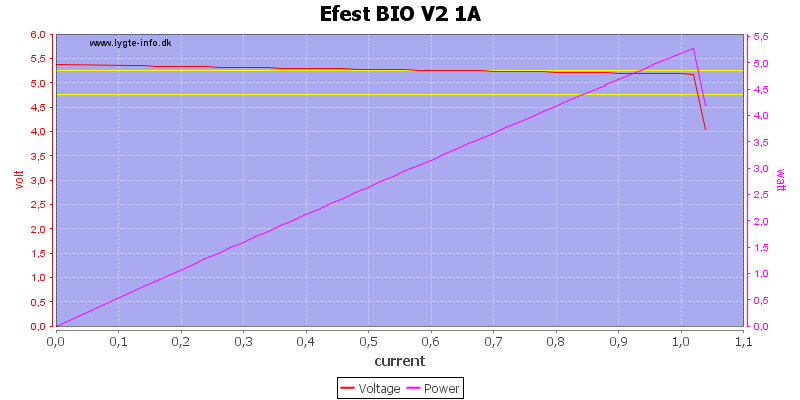
The charger has two usb output and I decided to do a test on each of them. The above curve shows the 1A output, it works fine to 1A.
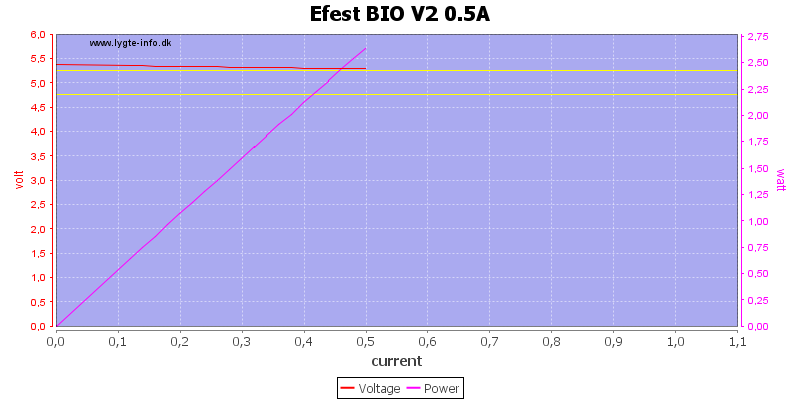
The 0.5 output can deliver exactly 0.5A.
I would have prefered 20% extra on both 0.5A and 1A output
.png)
I stated with a 5ohm load, i.e. a 1A load at 5 volt, this test was very short.
.png)
Reducing the load to 6 ohm, i.e. 0.8A worked much better. This time the output was on for about 1½ hour.
.png)
Reducing the load to 0.5A, but still using the 1A usb output, extends the time to 3 hours.
.png)
.png)
Using larger or smaller capacity batteries will, of course, change the runtime a bit.
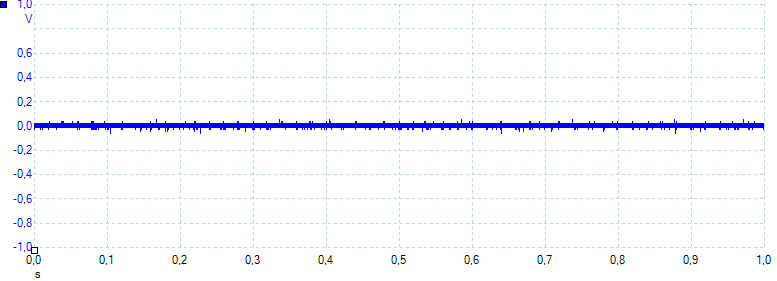
There is not much noise in the output (4mV rms).
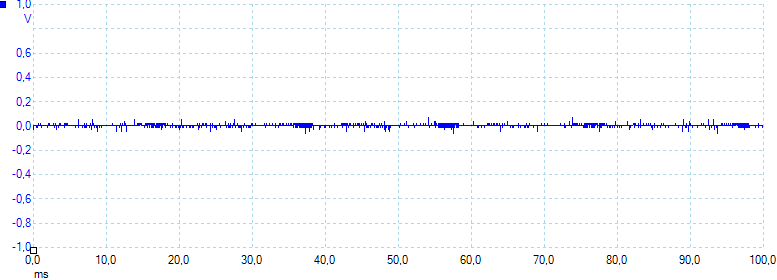
Reducing the load increases the noise (5.5mV rms). I only did a noise measurement at 0.5A load on the 1A output.
Testing with 2500 volt and 5000 volt between mains and low volt side, did not show any safety problems.
Conclusion
The features of the charger is good and the charger works fine.
Just be aware that old versions of the charger looks the same, but is not nearly as good.
Notes
The charger was supplied by Efest for a review.
Here is an explanation on how I did the above charge curves: How do I test a charger
Read more about how I test USB power supplies and chargers


















%20%231.png)
%20%231.png)
%20%231.png)
%20%231.png)
%20%232.png)
%20%231.png)
%20%231.png)
%20%231.png)
%20%231.png)
%20%231.png)
.png)
.png)


.png)





.png)
.png)
.png)
.png)
.png)

